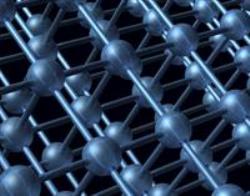The Norwegian Institute of Public Health recently conducted a study to determine the effect of silver and titanium dioxide nanoparticles on testicular cells. They found that titanium dioxide nanoparticles caused comparatively lesser damage than silver nanoparticles.

Engineered nanoparticles may pose risks. The usage of nanotechnology has increased and is being adapted in various applications and fields, including medicine, building products and consumer products. The increasing usage has brought up the necessity of monitoring the potential risks due to these nanoparticles, so as to ensure that they do not affect humans or the environment.
In rats and mice, nanoparticles have demonstrated the capability to cross the blood-testes barrier and the blood-brain barriers. In the present study, the researchers set out to determine if silver or titanium dioxide nanoparticles had any toxic effect on testicular cells of mice and humans. Both types of nanoparticles caused type-specific DNA damage to the cells. Titanium dioxide nanoparticles seemed to cause lesser damage than silver nanoparticles. Based on the duration of the exposure and the particle concentrations, silver nanoparticles suppressed cellular multiplication and growth, leading to cell death.
For the research, testicular cells obtained from two different mice strains were used. One of the mice strains was a genetically modified strain designed to represent the reproductive toxicity of human males. The researchers also used cells obtained from a cell line of human testicular carcinoma. Silver nanoparticles of two sizes, 20 and 200 nm, and titanium dioxide nanoparticles of 21 nm size were used. Silver nanoparticles were found to cause more cell death, and the 200 nm silver particles were found to cause more DNA damage.
The detrimental effect on reproductive health due to the nanoparticles has to be determined through further research using in vivo models. This study has been published in the journal, Toxicology.